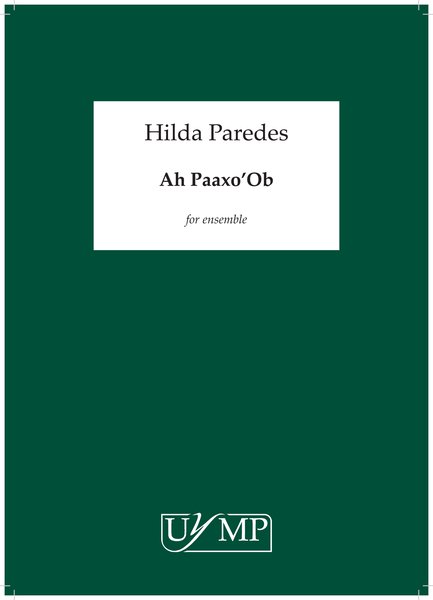Commissioned by the City of Frankfurt as part of the millenium programme 'Frankfurt am Main 2000' and Ensemble Modern.
Ah Paaxo’ob, composed for Ensemble Modern, is a “concerto for ensemble,” where different instruments
come to the fore in different sections. Each instrument is treated like a character of a play establishing
different kinds of relationship with the others. In this way, different situations are created that conform with
the sequence of events and with the structure of the piece as a whole.
There are five main sections, between an introduction and a closing section that can be thought of as a coda,
and with two transitional passages bridging sections. The opening section is played by the whole ensemble
in a descending sequence built around a pattern of thirteen notes. The number thirteen became quite
important in the structure of the piece.
The horn, strings, piano, and percussion are the main characters to appear after the introduction. Two
playful clarinets and marimba perform the transition to the next section, which is introduced by the flute,
gradually joined by the rest of the ensemble. A new lyrical section is given to the English horn and muted
strings, later joined by the bass clarinet and alto flute. This section is abruptly torn off by the trumpet, which
introduces a very bright and rhythmic section. Contrasting ideas arise, interrupting each other, to be resolved
by the whole ensemble playing quite frantically before we reach another transition. A reference to the
clarinets’ material is introduced by the bassoon and double bass in this passage, after which the last main
section features trombone, timpani, strings, and piano.
While writing this piece, I became acquainted with the ways the Maya used to measured time. This gave me
some ideas to apply to music, which is why in some of the metric and pitch decisions the number thirteen is
quite important.
The Maya had thirteen days and twenty different names for them, and overlapped them in cycles. Hence my
decision to choose a Mayan title for this piece: “Ah Paaxo’ob” means “those who play the music.” (H. P.)


